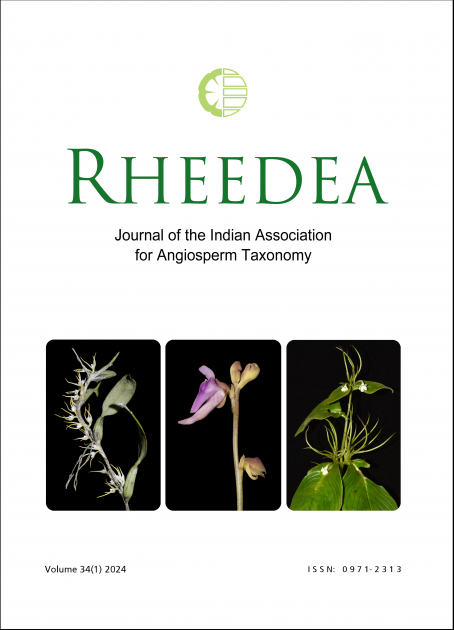Comparative leaf and stem anatomy refute the involvement of Senecio tropaeolifolius (Asteraceae)as parent of Senecio × kleiniiformis
Fedotov A.P. & A.C. Timonin
Published on : 31-Mar-2024
DOI : https://dx.doi.org/10.22244/rheedea.2024.34.01.01
DownloadAbstract
Senecio × kleiniiformis Suess. is a historically hypothesized hybrid species between Baculellum articulatum (L.f.) L.V.Ozerova & A.C.Timonin with a bifacial leaf blade and an unknown species with unifacial leaves. However, nuclear ribosomal ITS data suggest a close relationship between S. × kleiniiformis and Senecio tropaeolifolius MacOwan ex F.Muell., which also has a bifacial leaf blade. Senecio × kleiniiformis and S. tropaeolifolius have several traits in common, such as leaf venation pattern, presence of sclerenchyma strands in the stem, and the occurrence of clustered stomatal complexes in leaves. However, the similarity between S. × kleiniiformis and B. articulatum is higher. They share the same patterns of leaf blade anatomy, epidermal characters, the same leaf morphological series along the annual shoot, and most of the stem anatomical traits. Whereas leaves of the three investigated species have lateral lobes, only the lateral lobes of S. × kleiniiformis and B. articulatum are homologous to each other based on their development. Anatomical and morphological data obtained in the present study indicate that B. articulatum is more likely the bifacial-leaved parental species of S. × kleiniiformis than S. tropaeolifolius.
